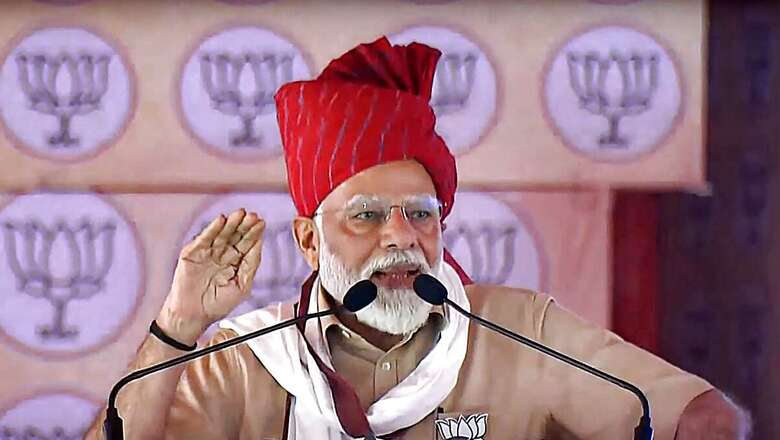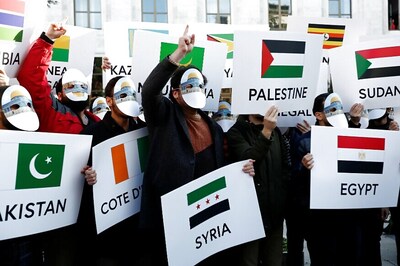
views
Landmark transformations often start with one big idea.
When Narendra Modi came to Delhi as the Prime Minister in the summer of 2014, he realised that to roll out his ambitious agenda of delivering benefits to common people without leakages, they first needed a bank account.
In his earliest meetings at the Prime Minister’s Office, Modi was clear he needed this scheme the foremost. “Every household must have a bank account,” Modi had told his team. Within three months was born the landmark ‘PM Jan Dhan Yojana’ that became the bedrock of what Modi has done since 2014.
On August 15, 2014, in his first address from Red Fort, Modi announced the scheme would be completed within five months, leaving the bureaucracy in a tizzy.
WHEN RAHUL GANDHI PRAISED THE SCHEME
This is in fact one scheme of the Modi government that came in for rare praise even from opposition leader Rahul Gandhi while he was speaking at the Cambridge University last year.
“Maybe giving women gas cylinders or people bank accounts is not a bad thing, it is a good thing…but that sort of misses the point, because, in my view, Modi is destroying the architecture of India. So, I am not too bothered about two-three good policies that Modi is doing,” Gandhi said, couching his praise with critique.
For Modi, the scheme’s progress proved to be a game-changer. BVR Subrahmanyam, the NITI Aayog CEO, says officials had expected that the targets for the scheme would take at least two-four years to achieve. “But Modi ensured the targets were met in five months. Around 12 crore previously unbanked individuals were brought into the formal banking system within five months of the scheme’s launch,” Subrahmanyam says.
Today, there are 53.13 crore PMJDY accounts, with 29.56 crore of them belonging to women account holders.
Today, we mark a momentous occasion— #10YearsOfJanDhan. Congratulations to all the beneficiaries and compliments to all those who worked to make this scheme a success. Jan Dhan Yojana has been paramount in boosting financial inclusion and giving dignity to crores of people,… pic.twitter.com/VgC7wMcZE8— Narendra Modi (@narendramodi) August 28, 2024
HOW IT HELPED
The PMJDY became the bedrock on which Modi government launched a number of welfare schemes as there was now a way to directly send cash benefits to the bank accounts of the poor without the need of any intermediaries and hence elimination of the concept of leakages. India already had the Aadhaar database to ensure the correct beneficiary held a particular bank account.
The World Bank noted last year that India has achieved in just six years what would have taken about five decades as the Jan Dhan-Aadhaar-Mobile (JAM) Trinity has propelled the financial inclusion rate from 25% in 2008 to over 80% of adults in the last six years.
Be it direct benefit transfers, COVID-19 financial assistance, PM-KISAN, increased wages under MGNREGA, subsidy amount under PM Ujjwala Yojana, or life and health insurance cover – all of this has been delivered on the foundation of the PMJDY. Today the last mile delivery of Government services happens with the click of a mouse in seconds.
Modi has often in his speeches cited the infamous quote of former PM Rajiv Gandhi that if one rupee started from Delhi in the past, only 15 paisa reaches the common man. The PMJDY has helped Modi ensure that the full one rupee now reaches the pocket of the common man, officials say.



















Comments
0 comment